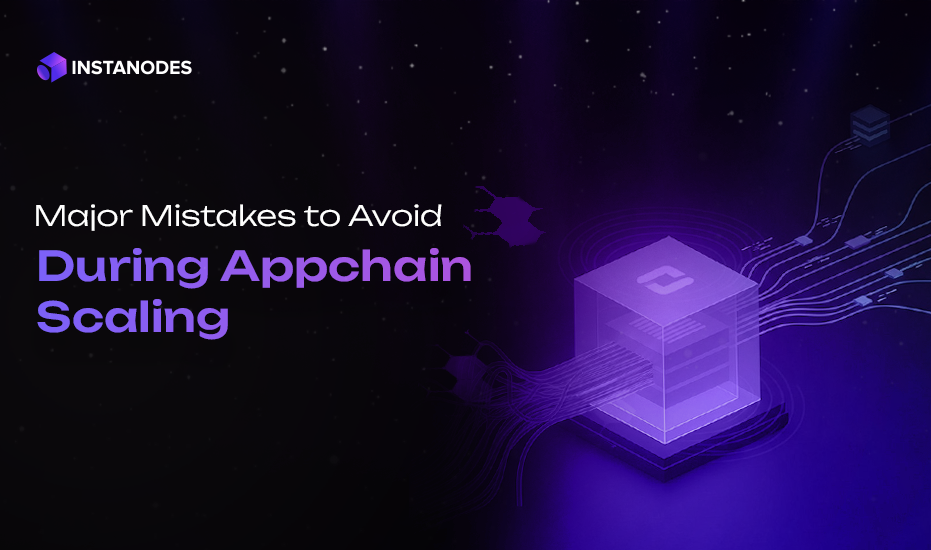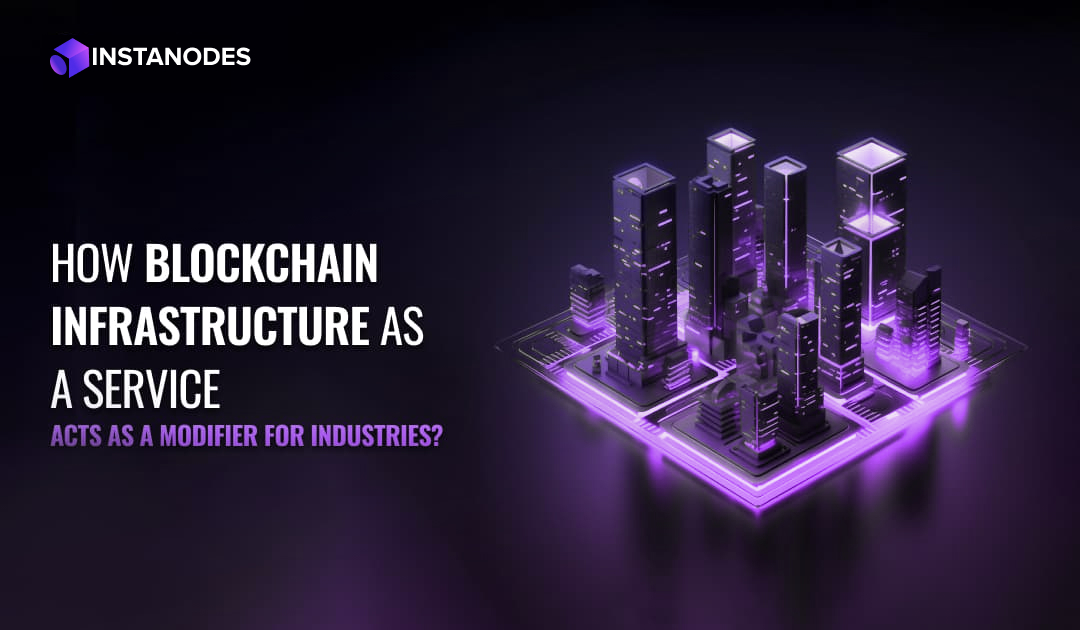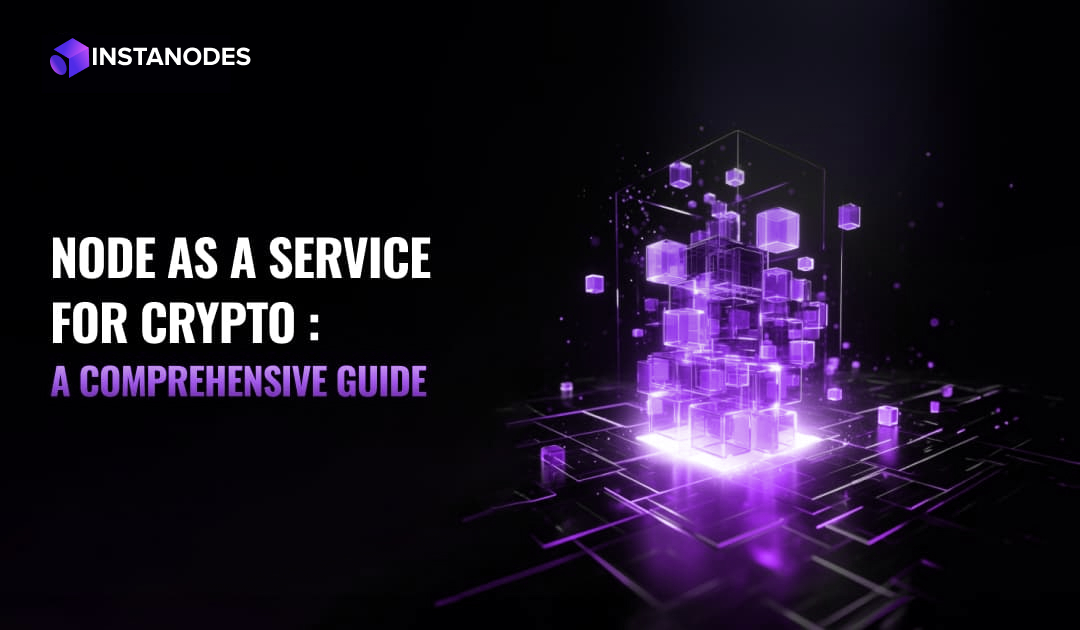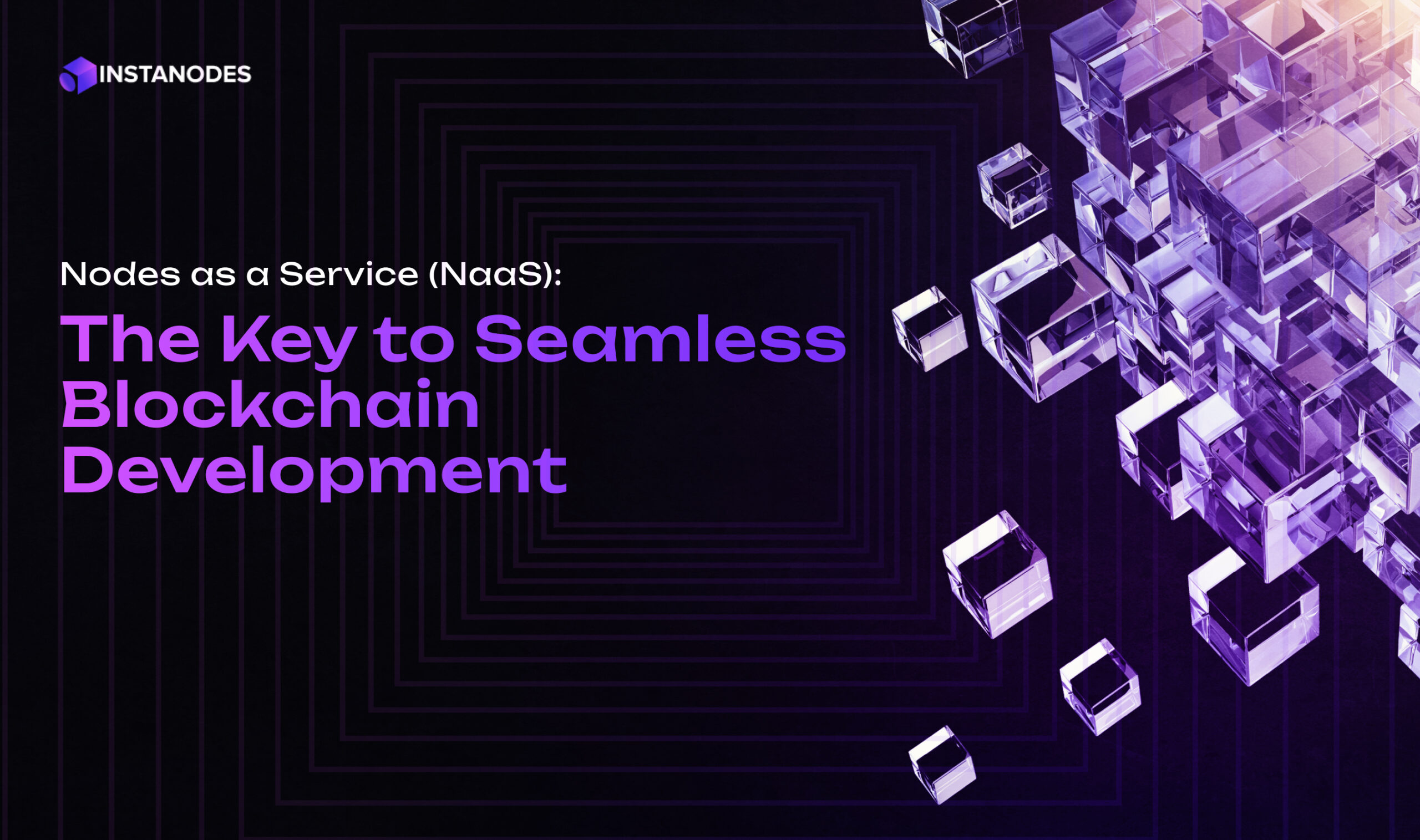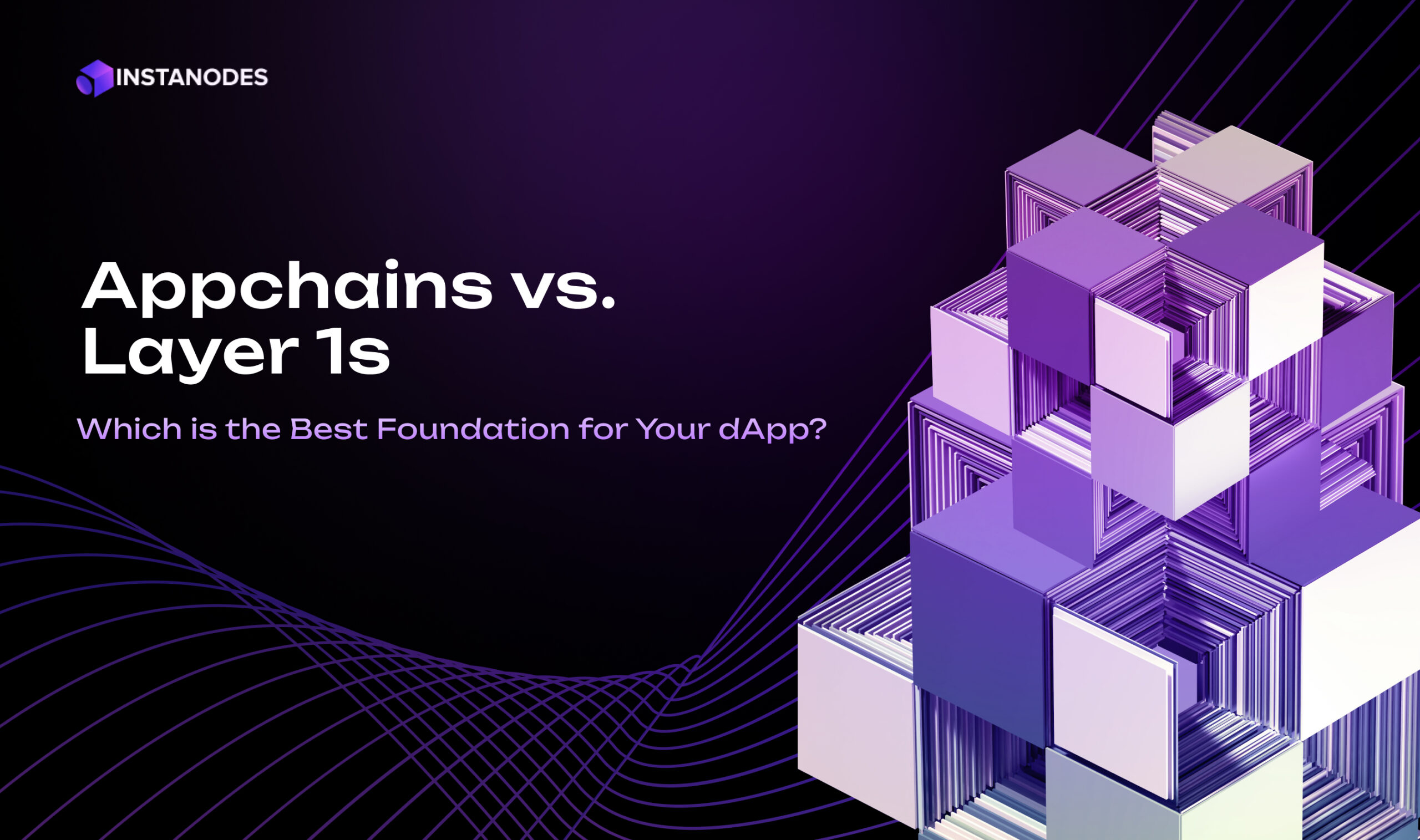Recall the day Axie Infinity took the gaming world by storm with tens of millions of users daily, then had their Ronin sidechain get brutally hacked for $600 million? Or when numerous DeFi protocols struggled with congestion and exorbitant fees on Ethereum, making them push a lot of people to look at dedicated Application Chain? These actual situations illustrate why launching an Appchain has become even more appealing for projects that desire more autonomy in their fate.
An Appchain is basically your own blockchain customized for a particular use, and provides something that shared networks just can’t. You get full independence. You define the rules, dictate the fees, and even tailor it all to your users’ requirements. It’s having your own road rather than playing traffic jam on a busy interstate.
Understanding the Core Purpose of Building an Appchain
Building a dApp on a traditional blockchain is very much like living in a crowded hostel. You’re compelled to follow the rules and regulations and share utilities with everyone else. You can do nothing when your neighbor decides to blast music (or, in crypto terms, when a popular NFT mint happens), so you just have to bear the situation.
Building an Appchain crypto platform is like constructing your own house. You choose the architecture, set the house rules, and control every aspect of the living experience. Projects like dYdX made this leap when they moved from Ethereum to their own Cosmos-based Application Chain, gaining the ability to eliminate gas fees for users and implement custom order book functionality that wasn’t possible on a shared network.
The benefits are compelling:
Appchain building is similar to building your own home. You select the architecture, establish the rules of the house, and have complete control over the nature of living.
- Fee control: Determine transaction fees that are appropriate for your users, not what the market dictates on an over-busy network.
- Custom functionality: Create functionalities that would be unbearably difficult or infeasible on general-purpose chains.
- Performance optimization: Consensus design and implementation tailored to your application’s requirements.
- Governance autonomy: Make decisions without being subject to the broader network’s politics.
But great power comes with great responsibility. You now have security, validator management, upgrades, and all the infrastructure pain that goes into operating a blockchain. Most projects embark on Appchain development without a proper understanding of these responsibilities, resulting in expensive blunders during scaling.
Top Mistakes That May Weaken Your Application Chain
Scaling an Application Chain successfully means avoiding pitfalls in multiple areas, from design and security to governance and community. Let’s examine some of the biggest mistakes teams make:
1. Neglecting Cross-Chain Interoperability During Initial Architecture
Here is one of those more common scenarios: A team builds a great gaming Appchain, allowing users to make lightning-fast transactions without fees. Players love the experience, but then they want to trade their in-game NFTs on OpenSea, or use USDC from their Ethereum wallet to make purchases. Suddenly, the amazing user experience hits a brick wall because the team treated their Appchain like an island.
Key problems this creates:
- Users get frustrated when they can’t move assets freely between chains.
- Limited access to external liquidity and services.
- Missed partnership opportunities with other protocols.
- Challenges in getting users that do not wish to be locked into an ecosystem.
Real-world example: Early gaming chains frequently suffered from this. Players would collect valuable NFTs within the game but not be able to easily sell them on major marketplaces, which created artificial barriers that destroyed adoption.
What to do instead:
- Plan for interoperability on day one, and not as an afterthought.
- Implement strong bridging mechanisms with tried-and-tested solutions such as IBC or LayerZero.
- Design your token and NFT standards to be cross-chain compatible.
- Build relationships with bridge providers and cross-chain infrastructure.
- Test asset transfers thoroughly before launch.
The technical debt of retrofitting interoperability is monumental. It is far easier to construct bridges into your foundation than to excavate them underneath an existing home.
2. Underestimating Validator Network Requirements and Incentive Design
Let’s say you have deployed your Appchain with 7 validators, whom you personally know. Everything goes perfectly well for some months. Then your app picks up steam, volume of transactions goes 10x, and one fine day, you come to the realization that your “decentralized” network is in fact managed by your buddies who are running validators on their laptops from a coffee shop.
This isn’t an exaggeration – it’s happened to multiple projects that rushed to launch without properly designing their validator ecosystem.
Critical validator considerations:
- Geographic distribution: Having all validators in one country creates regulatory and infrastructure risks.
- Technical requirements: Balance accessibility with performance needs.
- Economic incentives: Rewards must cover costs while preventing centralization.
- Slashing mechanisms: Punish bad behavior without scaring away honest participants.
The Cosmos ecosystem offers great examples: Successful Appchains like Osmosis and Juno built diverse validator sets from launch, while some smaller chains struggled with centralization issues that haunted them for years.
What successful projects do:
- Start with clear validator requirements and onboarding processes.
- Design token economics that scale with network growth.
- Implement gradual decentralization plans rather than rushing.
- Create validator education programs and support systems.
- Monitor validator performance and geographic distribution regularly.
Keep in mind, your security is as strong as your weakest validator. A compromised validator in a small group can be disastrous, but with a large, diverse set, it’s manageable.
3. Ignoring Security Trade-offs When Designing a Custom Application Chain
The Ronin hack wasn’t just about a compromised bridge – it highlighted how custom chains can introduce unique security risks that developers don’t always anticipate. When you build your own Application Chain, you’re essentially saying “we can do security better than Ethereum” while often having a fraction of the resources and battle-testing.
Common security shortcuts that bite back:
- Modifying consensus algorithms without understanding the implications.
- Skipping formal security audits to save time and money.
- Implementing custom cryptography instead of using proven standards.
- Prioritizing speed over security in the initial design.
The Terra Luna collapse showed how economic security models can fail catastrophically when not properly designed. Their algorithmic stablecoin mechanism had flaws that became apparent only under extreme market stress.
Application-specific security considerations:
- Gaming chains need protection against botting and item duplication.
- DeFi chains must prevent flash loan attacks and oracle manipulation.
- Social media chains require content verification and spam prevention.
- Each use case has unique attack vectors that generic security doesn’t address.
Security best practices for Appchains:
- Perform several independent security audits before and after release.
- Use bug bounty programs with substantial rewards.
- Utilize battle-tested consensus mechanisms as opposed to test ones.
- Plan for security incidents with clear response procedures.
- Regular security reviews as the application evolves.
The harsh truth is that attackers are continually testing for vulnerabilities, and a successful exploit on your Appchain not only hurts your project – it harms the entire Application Chain narrative.
4. Scaling Too Early Without a Sustainable Appchain Architecture
There’s immense pressure in crypto to grow fast or die. Companies look at competitors adding users and are forced to grow rapidly, too fast, often before they have a stable foundation. It’s like constructing the 20th story of a building when the foundation will only be able to support 5 stories.
Classic premature scaling mistakes:
- Marketing heavily before the infrastructure can handle the user influx.
- Adding features faster than fixing underlying performance issues.
- Deploying rapid patches rather than architectural fixes.
- Prioritizing vanity metrics over sustainable growth.
The CryptoKitties craze is an ideal illustration of the consequences of demand exceeding infrastructure. The Ethereum network was not prepared for the spontaneous spike in utilization, which caused enormous congestion and a terrible user experience. Appchains are subject to the same dangers but with even lower tolerance for mistakes.
Sustainable scaling requires:
- Gradual user onboarding: Controlled growth that matches infrastructure capacity.
- Stress testing under realistic conditions: Not just theoretical maximum throughput.
- Scalable data architecture: Planning for exponential data growth from day one.
- Flexible economic models: Fee designs that are effective at low usage and high usage.
- Infrastructure monitoring: Real-time insight into system performance.
Real-world example: Immutable X developed their gaming-centric Appchain with scaling in mind from the outset. They stress-tested with millions of NFT transactions prior to going public, testing that their infrastructure was capable of supporting the gaming industry’s specific needs.
The critical insight is that slow and steady growth trumps explosive growth every single time. To service 10,000 satisfied users effortlessly is preferable to infuriating 100,000 users with a busted experience.
5. Ignoring Application-Specific Performance Bottlenecks
This is where Appchain crypto projects often miss their biggest opportunity. You create a bespoke blockchain for your app, but then you optimize for generic blockchain performance rather than what is actually important for your users.
Real-time gaming applications require ultra-low latency. A 2-second block time may seem quick, but it is an eternity when a player is attempting to parry an attack in a PvP game. However, it can tolerate eventual consistency when updating a leaderboard.
DeFi applications require atomic execution and precise ordering, but they might benefit from batching similar operations to reduce overhead. A DEX needs different optimizations than a lending protocol.
Social media Appchains are more interested in content distribution speed and storage space efficiency than in transaction throughput. Users do not care whether their like takes 5 seconds to process, but they will leave if their feed takes 10 seconds to load.
Common optimization mistakes:
- Focusing solely on transactions per second (TPS) when other metrics matter more.
- Using generic blockchain data structures instead of application-specific ones.
- Ignoring caching opportunities that could dramatically improve user experience.
- Failing to optimize for the most common user actions.
Success stories:
- Flow blockchain optimized specifically for NFTs and gaming, separating smart contract logic from computation.
- Solana designed their architecture around high-frequency trading needs with proof-of-history.
- Polygon’s gaming chains implement instant finality for gaming actions while using standard finality for value transfers.
Key optimization areas:
- Custom virtual machines tailored for your application’s operations.
- Application-specific indexing and query optimization.
- Specialized consensus mechanisms for different types of transactions.
- Smart caching strategies for frequently accessed data.
The entire purpose of creating an Appchain is that you’re optimizing for your particular use case. If you’re not leveraging that customization, then you might as well have remained on a general-purpose chain.
6. Failing to Plan for Governance Evolution and Community Growth
Governance tends to begin as “let’s just make decisions in Discord” and must transition to something that can manage thousands of stakeholders making million-dollar decisions. The projects that fail to plan for this transition often find themselves paralyzed when they need to make critical changes.
The evolution problem: Early stage governance works with 50 engaged community members who all know each other. But when you have 50,000 token holders, informal consensus breaks down completely. Decisions take forever, controversial proposals create community splits, and important technical upgrades get blocked by politics.
Common governance failures:
- No clear proposal process: Anyone can suggest anything, leading to chaos.
- Poor voter participation: Most token holders don’t vote, giving disproportionate power to small groups.
- Technical decisions of non-technical voters: Intricate protocol updates determined by popularity instead of merit.
- Gross underrepresentation: The big stakeholders rule while little folks in the community go unrepresented.
Real-world examples:
- MakerDAO struggled with governance participation despite billions in TVL, leading to major governance reforms.
- Uniswap faced criticism when early governance proposals had minimal participation from smaller holders.
- Various Cosmos Appchains have dealt with validator voting power concentration issues.
Building governance that scales:
- Progressive decentralization: Start with core team control, gradually transfer power as the community matures.
- Multiple governance tracks: Technical upgrades, economic parameters, and social decisions need different processes.
- Delegate systems: Allow token holders to delegate voting power to experts they trust.
- Clear channels of communication: Regular reporting, forums for debate, and learning resources.
- Conflict resolution mechanisms: Means of dealing with conflicts without dividing the community.
Token distribution considerations:
- Avoid extreme concentration in early investors or team members.
- Plan for ongoing distribution through grants, incentives, and community programs.
- Consider voting power caps to prevent whale dominance.
- Implement time-based vesting to maintain long-term alignment.
The objective is not an ideal democracy; it’s good decision-making that retains community trust and allows for changes necessary to make your Appchain competitive and secure.
Final Thoughts
Creating a successful Appchain isn’t so much about coding better or coming up with a new idea – it’s about not stepping on the landmines that have exploded into oblivion all the projects that preceded you. Every error we’ve discussed has had multiple victims, from large teams with great coders to promising initiatives that took early traction and then fell apart under scaling stress.
The trend is always the same: teams care deeply about their application’s core feature set while relegating blockchain infrastructure to an afterthought. They hold the misconception that if they create something users adore, the technical issues will take care of themselves. But as we’ve seen repeatedly, a wonderful application atop a lackluster Appchain is similar to a gorgeous house constructed on quicksand.
The successful projects in the long run are those that honor the complexity of what they’re creating. They design for interoperability from day one, spend extensively on security audits even during times of budget constraint, and architect governance systems that can scale with their community. Above all, they realize that deploying an Appchain is only the first step. The true work begins when users show up and challenge your infrastructure to its limits.
If you’re planning to build an Appchain, learn from the mistakes of others. You might have come across brilliant ideas that failed because their creators underestimated the infrastructure challenges. Don’t let your project become another cautionary tale.
Ready to build your Appchain the right way? Instanodes specializes in architecting an Application Chain with scalable infrastructure that can handle millions of users.
Get in touch with us today, and let’s build your Appchain crypto foundation that won’t crack under pressure.
